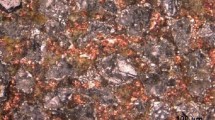Abstract
This article presents an overview of current simulation methods describing the interaction of grinding process and grinding machine structure, e.g., vibrations, deflections, or thermal deformations. Innovative process models which describe the effects of the grinding wheel–workpiece interaction inside the contact zone are shown in detail. Furthermore, simulation models representing the static and dynamic behaviour of a grinding machine and its components are discussed. Machine tool components with a high influence on the process results are modelled more detailed than those with low influence. The key issue of the paper is the coupling of process and machine tool models for predicting the interactions of process and machine. Several coupling methods are introduced and the improvements of the simulation results are documented. On the basis of the presented simulation approaches, grinding processes and machines can be designed more effectively resulting in higher workpiece quality and process stability.











Similar content being viewed by others
References
Brinksmeier E, Aurich JC, Govekar E, Heinzel C, Hoffmeister HW, Peters J, Rentsch R, Stephenson DJ, Uhlmann E, Weinert K, Wittmann M (2006) Advances in modeling and simulation of grinding processes. Ann CIRP 55(2):667–696
Tönshoff HK, Peters J, Inasaki T, Paul T (1992) Modelling and simulation of grinding processes. Ann CIRP 41(2):677–688
Hou ZB, Komanduri R (2003) On the mechanics of the grinding process---Part 1. Stochastic nature of the grinding process. Int J Mach Tools Manuf 43:1579–1593. doi:10.1016/S0890-6955(03)00186-X
Mackerle J (2003) Finite element analysis and simulation of machining: an addendum. A Bibliography (1996–2002). Int J Mach Tools Manuf 43:103–114. doi:10.1016/S0890-6955(02)00162-1
Denkena B, Tracht K, Deichmüller M (2006) Wechselwirkungen zwischen Struktur und Prozess beim Werkzeugschleifen. wt Werkstattstechnik online, Jahrgang 96, H. 11/12
Zitt U-R (1999) Modellierung und Simulation von Hochleistungsschleifprozessen. Dissertation, University of Kaiserslautern
Kienzle O (1954) Einfluss der Wärmebehandlung von Stählen auf die Hauptschnittkraft beim Drehen. Stahl Eisen 74:530–551
Braun O (2008) Konzept zur Gestaltung und Anwendung definiert gesetzter CBN Schleifscheiben. Dissertation, Universität Kaiserslautern
Klocke F, Duscha M, Hoffmann F, Wegner H (2008) Prozess-Maschine-Wechselwirkung beim Pendel- und Schnellhubschleifen mit hochharten Schleifscheiben. Diamond Buisness 3(2008):52–60
Weinert K, Blum H, Jansen T, Mohn T, Rademacher A (2006) Angepasste Simulationstechnik zur Analyse NC-gesteuerter Formschleifprozesse. ZWF Zeitschrift für wirtschaftlichen Fabrikbetrieb 101(7–8):422–425
Weinert K, Blum H, Jansen T, Rademacher A (2007) Simulation based optimization of the NC-shape grinding process with toroid grinding wheels. Production engineering—research and development. Springer, Berlin, 1/3:245–252
Biermann D, Mohn T (2008) A geometric-kinematical approach for the simulation of complex grinding processes, CIRP Intelligent Computation in Manufacturing Engineering, Innovation and Cognitive Production Technology and Systems, Naples, Italy
Neidhold T, Blochwitz T, Schreiber U (1999) Kooperation von Simulatoren durch Kopplung. 8. GMM-WS “Methoden und Werkzeuge zum Entwurf von Mikrosystemen”, 2.-3.12. 175–182, Berlin
Altintas Y, Brecher C, Weck M, Witt S (2005) Virtual machine tool. Ann CIRP. Keynote Pap STC-M 55(2)
Source: BLOHM Maschinenbau GmbH, Profimat MT 408 HTS
Weck M, Queins Q, Brecher C (2003) Coupled simulation of control loop and structural dynamics. Ann Ger Acad Soc Prod Eng X(2):105–110
Brecher C, Queins M, Witt S (2004) Coupled simulation of structural dynamics and control loops for the development of high-dynamic machine tools. In: Proceedings of NAFEMS seminar “Mechatronics in Structural Analysis”, Wiesbaden
Werner K, Klocke F, Brinksmeier E (2003) Modelling and simulation of grinding processes. In: 1st European conference on grinding. Aachen, S. 8–1–8–27
Queins M (2005), Simulation des dynamischen Verhaltens von Werkzeugmaschinen mit Hilfe flexibler Mehrkörpermodelle. Dissertation, RWTH Aachen
Hoffmann F, Brecher C (2006) Simulation dynamischer Bahnabweichungen von Werkzeugmaschinen. In: Proceedings of VDI conference “Elektrisch-mechanische Antriebssysteme”, Düsseldorf, VDI
Klocke F, Duscha M, Hoffmann F, Wegner H, Zeppenfeld C (2008) Machine–grinding wheel–workpiece interaction in speed stroke grinding. In: Proceedings of the 1st international conference on process machine interaction, pp 259–266
Herzenstiel P, Ching CY, Ricker S, Menzel A, Steinmann P, Aurich JC (2007) Interaction of process and machine during high-performance grinding—towards a comprehensive simulation concept. Int J Manuf Technol Manage 12(1/2/3):155–170
Jansen T (2007) Entwicklung einer Simulation für den NC-Formschleifprozess mit Torusschleifscheiben. Dissertation, Technische Universität Dortmund, Essen, Band 43
Denkena B, Deichmueller M, Kroeger M, Panning L, Carstensen C, Kilian S (2007) Modeling and simulation of the process machine interaction during tool grinding processes. In: Proceedings of the 10th CIRP international workshop on modelling of machining operations, 27–28.8.2007, Reggio Calabria, Italy
Popp KM, Kröger M, Deichmueller M, Denkena B (2008) Analysis of the machine structure and dynamic response of a tool grinding machine. In: Proceedings of the 1st international conference on process machine interaction, pp 299–307
Denkena B, Deichmueller M, Kröger M, Popp KM, Carstensen C, Schroeder A, Wiedemann S (2008) Geometrical analysis of the complex contact area for modeling the local distribution of process forces in tool grinding. In: Proceedings of the 1st international conference on process machine interaction, pp 289–298
Malkin S, Guo C (2007) Thermal analysis of grinding. CIRP Ann Manuf Technol 56(2):760–782
Herzenstiel P, Bouabid A, Steinmann P, Aurich JC (2008) Experimental investigation and computational simulation of process–machine interactions during high-performance surface grinding. In: Proceedings of the 1st international conference on process machine interaction, pp 267–278
Weinert K, Blum H, Jansen T, Mohn T, Noyen M, Rademacher A (2007) Verfahrensspezifische Modellbildung für die Belastung beim Schleifen. In: Hoffmeister H-W, Denkena B: Jahrbuch Schleifen, Honen, Läppen und Polieren, Vulkan-Verlag, Essen, 63:24–38
Acknowledgments
This research work was supported by the German Research Foundation (Deutsche Forschungsgemeinschaft, DFG) within the Priority Program 1180 “Prediction and Manipulation of Interaction between Structure and Process”. The authors wish to express their sincere thanks to further co-workers for their effort in helping to write this paper, namely A. Bouabid, M. Deichmüller, M. Duscha, P. Herzenstiel, F. Hoffmann, K. M. Popp, A. Rademacher, A. V. Scheidler, M. Weiss, and S. Wiedemann.
Author information
Authors and Affiliations
Corresponding author
Rights and permissions
About this article
Cite this article
Aurich, J.C., Biermann, D., Blum, H. et al. Modelling and simulation of process: machine interaction in grinding. Prod. Eng. Res. Devel. 3, 111–120 (2009). https://doi.org/10.1007/s11740-008-0137-x
Received:
Accepted:
Published:
Issue Date:
DOI: https://doi.org/10.1007/s11740-008-0137-x




